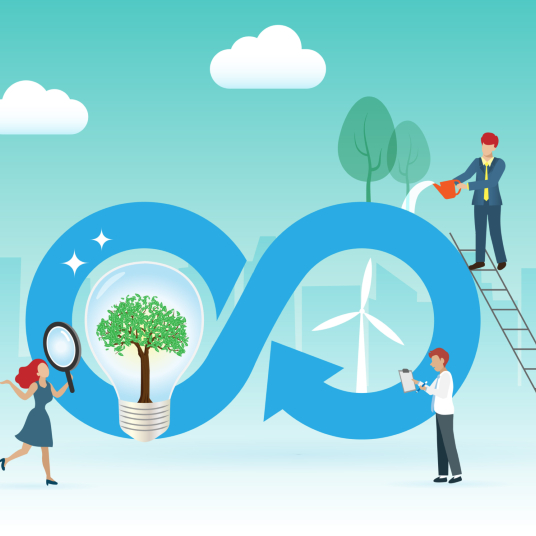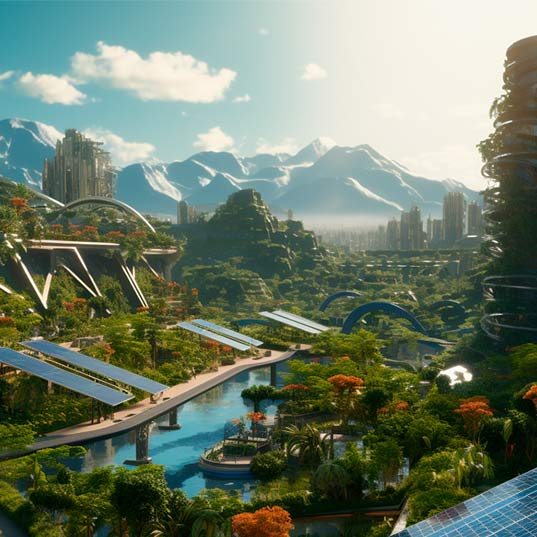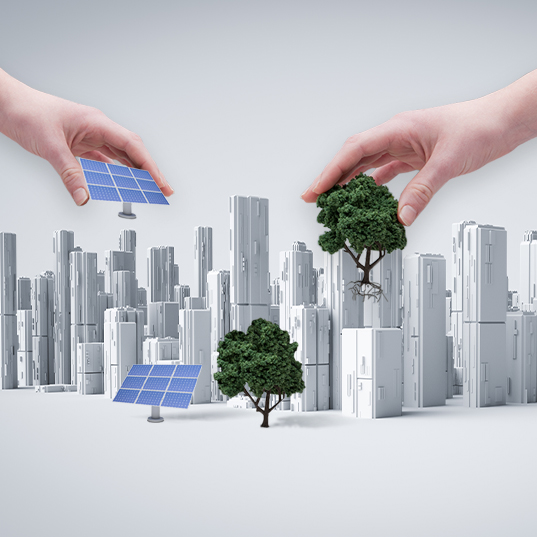Sustainable regeneration is the only way to make things right with the planet
Sustainability is key in the fight against climate change, but the planet needs us to go one step further: We must replenish and restore its resources. Let us explain what sustainable regeneration is.
We've been talking about sustainability for years, ever since the Brundtland report first asserted that sustainable development was the key to meeting future environmental challenges and tackling climate change. To say something is "sustainable" means that it can continue over time without interruption or weakening. When we talk about sustainability in relation to the environment, it means avoiding the depletion of natural resources so as to maintain an ecological balance.
However, said balance does not currently exist. In 2021, Earth Overshoot Day fell on 29 July, meaning that in just seven months we had consumed all the resources that the planet could generate in a year. In other words, at the current rate of consumption, energy use and exploitation of natural resources, we would need almost two planets to sustain our current way of life and economic system.
"We would need almost two planets to sustain our current way of life and economic system"
Is sustainability really what the planet needs when, according to the latest scientific reports, the only things we are capable of sustaining are the ecological deficit, excessive emissions and pollution levels that are still too high?
Yes and no. Yes, because sustainability focuses on not harming the planet and ceasing to irresponsibly consume its resources, and that should be the guiding principle inherent in all human activities. And no, because this alone is no longer enough. That's why we have to talk about a second concept: regeneration (or sustainable regeneration). This goes a step further than sustainability, striving not only to prevent harm, but to redress that which has already been done and regenerate what has been lost.
From sustainability to regeneration
 We need to replenish and restore what the planet has lost. Offsetting is no longer enough; we must "heal" environmental, economic and social wounds. And this is the promise of sustainable regeneration, a concept that seeks to create economies and communities that thrive so that the planet can too.
We need to replenish and restore what the planet has lost. Offsetting is no longer enough; we must "heal" environmental, economic and social wounds. And this is the promise of sustainable regeneration, a concept that seeks to create economies and communities that thrive so that the planet can too.
How could we achieve it? If we are to tackle the worrisome trends threatening our world, we need to rethink how the world works. The current system is failing us and the planet.
"Sustainable regeneration seeks to create economies and communities that thrive so that the planet can too"
There is work to be done on several fronts in the fight against climate change. But committing to a circular economy, achieving carbon neutrality and building resilient infrastructure are three crucial steps if we are to reduce global warming.
Because it is not just a question of fighting climate change, but also of mitigating its effects and adapting to them.
The pillars of regenerative sustainability
Change is underway. We have a unique opportunity to reshape how we live, learn, work and do business, for the better. This transformation rests on three pillars:
🌎 Planet: Seeking to have a positive impact on the world in which we live is vital. To achieve this, we must take regenerative actions that address climate issues, the transition to a circular model, water and biodiversity. We must not only pursue decarbonisation and zero CO2 emissions, but also undertake initiatives that seek a net positive impact by removing the emissions that have already been released into the atmosphere.
👥 People: Social and environmental justice are intrinsically linked. To be truly sustainable, institutions and businesses alike must take an intersectional approach and address systemic inequalities together with the climate crisis.
✅ Governance: Integrating sustainability management into economic-financial functions is also crucial. How? By pursuing greater transparency, efficiency and rigour in the activities of such functions, and by promoting management based on ethics and integrity.
Sustainable regeneration goes beyond the classic concept of sustainability and seeks to strive not only to avoid damage but to repair it, to regenerate it 🩹🌎
Knowledge test
Generating a positive impact
 Our current economic model is linear. We are continuously extracting resources and producing vast quantities of waste. In other words, transforming valuable materials into rubbish.
Our current economic model is linear. We are continuously extracting resources and producing vast quantities of waste. In other words, transforming valuable materials into rubbish.
Why is this happening? Because since the first Industrial Revolution, development has been based on a system rooted in extraction, production and disposal.
This is an inefficient, economic model based on the intensive use of natural resources and fossil fuels — the burning of which causes global warming. Read this article to find out more.
We then come to the sustainability approach, where we give back to the natural environment the same amount as we take.
But after so many years of an extractive approach, we now need to have a regenerative outlook, where we give back much more than we take. This is how we can reduce our planet's prevailing ecological deficit, emissions and pollution levels.
Rising temperatures are responsible for the natural disasters that have become a daily occurrence. With terrible fires and floods, record temperatures and everything in between, the UN has warned once again that the reduction in global emissions is well below the minimum set by the Paris Agreement. Accelerating decarbonisation is crucial.
We need infrastructure that can replenish and restore what the planet has lost. We need to work for nature and create a system that is consistent with the survival of the Earth and those who call it home. The times we are living in demand that we become more adaptable, resilient and resolute.
Sources:
https://www.wundermanthompson.com/insight/regeneration-rising







